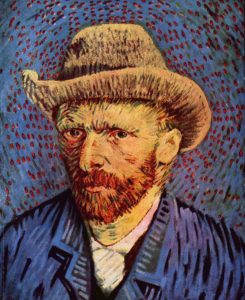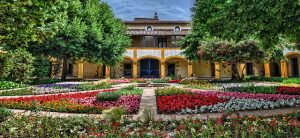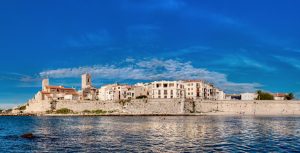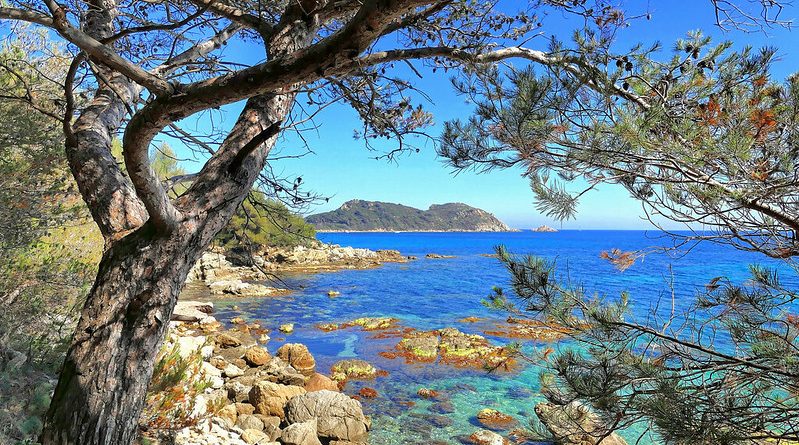Art Trails of the French Riviera
A seemingly endless stretch of warm beaches, charismatic towns, and luxurious resorts, the French Riviera offers both the wandering art lover and the extravagant millionaire a getaway that can’t be matched. Before it became known as the popular tourist destination it is today, the area was a quaint home to quiet fishing villages undisturbed by outside influence and it is no wonder that founding fathers of modern art found inspiration here. Situated right where the Mediterranean meets the Alps, the French Riviera enjoys a lovely and mild climate all year round, but if you plan your trip for spring or autumn you’ll be able to avoid the summer tourists and still explore the coastline in sandals and sun hats.
Art on the Riviera
 The French Riviera is not the largest of areas, but it somehow drew flocks of artists, many of whom are now regarded as the world’s most influential and important. A few of the most notable artists who worked along the Riviera were Pablo Picasso, Claude Monet, Paul Cezanne, Henri Matisse, and Edvard Munch – the list could go on and on! Inspired by the sparkling blue waters and the scenic streets, Cezanne was the first to arrive in the early 1880s.
The French Riviera is not the largest of areas, but it somehow drew flocks of artists, many of whom are now regarded as the world’s most influential and important. A few of the most notable artists who worked along the Riviera were Pablo Picasso, Claude Monet, Paul Cezanne, Henri Matisse, and Edvard Munch – the list could go on and on! Inspired by the sparkling blue waters and the scenic streets, Cezanne was the first to arrive in the early 1880s.
Not long after, many other artists learned of the French Riviera and followed Cezanne’s path, enamoured by the way sunlight affected the different landscapes and inspired to paint what they saw. The arrival of artists also coincided with the arrival of the wealthy British upper class, who slowly began to fund and commission artists living there in return for original art pieces.
From then on, the French Riviera, also known as the Côte d’Azur, developed into a popular vacation spot for the wealthy and a thriving cultural centre for art.
Must See Spots

Arles, Provence
A small city along the Riviera, Arles is well known for being a home to Vincent van Gogh in his last year of life. Here, you can walk through the very streets and sights that inspired van Gogh’s most famous pieces and even visit the asylum he checked himself into, the Monastere St-Paul de Mausole. While you revel in seeing van Gogh’s artwork come to life before your eyes, you can also experience the city’s abundant array of Roman architecture. A visit to the Musee de l’Arles antique will show you amazing Roman sculptures and artefacts that you won’t be able to see anywhere else, right on the grounds in which they came from.
Aix-en-Provence
Aix, the birthplace of modern art, was once home to impressionist Paul Cezanne. It was here that he painted the unforgettable peaks of the Mont Sainte Victoire and gave impressionism its defining look. If you happen to travel between June and August, you’ll be able to view the famous and picturesque lavender fields; you’ll be sharing that view with tons of other tourists but the sight of the picture-perfect flowers will be worth it. Another tip, don’t be afraid to ditch your map here! Aix-en-Provence has a number of lovely little villages that all welcome wandering travellers with beautiful views and amazing local food.
Cagnes Sur Mer
This perpetually sunny village caught the affections of the famed Pierre-Auguste Renoir. He loved weather and light so much that he bought a farmhouse and turned it into his own Impressionist studio. You can still visit that his home today and see his original paints hanging on his walls unprotected as they were when he first strung them up. Cagnes Sur Mer offers a number of other sights. Stroll around Haut de Cagnes, a medieval town with narrow streets and unforgettable view points of the Mediterranean Sea. There’s also a lovely pebble beach that stretches on for four kilometres. If you want more medieval architecture, you can’t miss the Chateau Grimaldi, once a magnificent fortress and now a museum for modern art. If horse races are your thing, spend some time at the Hippodrome de la Cote d’Azur and enjoy a fantastic display of racing; if you go at night you’ll also be treated to a huge fireworks show.
Vallauris
If you’re a fan of Pablo Picasso, a visit to Vallauris is a must. He became immersed in pottery while living in this clay quarrying town and in gratitude to the town’s kindness, he painted the main chapel with surrealist art regarding the subjects of war and peace. Head a few miles east to the glass-blowing town of Biot and spend some time on the grounds of modern artist Fernand Leger’s home. Here you can see a museum built with beautiful stained glass windows which pour in colourful light onto the blank walls. The national museum of his work is also worth a trip; its set on gorgeous grounds inside of a magnificent building and it’s well known as being a true tribute to modern art. While you’re there, you can also spend some peaceful time at the Bonsai Museum and even take a glass-blowing class to feel like a local.
Antibes
Here in Antibes, you can spend some time at the other Chateu Grimaldi, which was once home to the famous Grimaldi family. This chataeu also housed Pablo Picasso for six months and was thus turned into a museum dedicated to him. He and his wife donated a number of pieces to the museum and it currently holds 245 works of his! If you a fancy a scenic walk after, the Le Sentier du Littoral will grant you one of the most beautiful footpaths in the world. Find your way to the Garoupe Lighthouse and you’ll see some amazing views, especially if you arrive right before sunset. If you’re feeling extra fancy, spend a night at Hôtel du Cap-Eden Roc, a recreation of a nineteenth-century chateau.

Another popular choice is the Belles Rives hotel. Walking through this Art Deco monument also means walking through the same building that was a summer home to some of the early nineteenth century’s greatest artists. F. Scott Fitzgerald and his wife Zelda, Pablo Picasso, and Louis Armstrong frequented the hotel often, either for relaxing or partying. As more of the elite and powerful began to learn of the Riviera’s clear blue skies, they came as well, and began to invest huge amounts of money into art. It was at this point that the modern artist was finally recognized and a piece of his signed work could heighten a millionaire’s status in seconds. Finally, you can end your night at the famous Absinthe Museum; buy a drink there and spend a few hours lounging and enjoying your time with other locals and tourists.
Nice
Nice is one of the Riveria’s most popular destinations, and with good reason. Modernist master Henri Matisse spent his last years here and often spent a large amount of time rowing around the port’s Club Nautique and contemplating life on his canoe. Inspired by the faith he found while in Nice, Matisse built a little chapel in Vence, just a few miles away. Take some time to explore the Musee Matisse as well; here you can observe his artistic evolution housed in a gorgeous red-ochre Genoese villa. You could spend weeks and weeks exploring the rest of Nice, but if you have a limited amount of time, squeeze in a walk up to Castle Hill, where you’ll get a full panoramic view of the Riveria.
If you want even more art to take in, the Musee Marc Chagall will give you a full range of the Russian artist’s works. Stop by the Cathedral of Saint Nicholas as well, and you’ll get a taste of genuine Russian design. You also can’t miss spending a bit of time at Place Massena, the city’s main square, where you can relax and enjoy the picturesque views right in the centre of Nice.
Saint Paul
Close to Vence, Saint Paul is an old medieval town with a huge history of art. Chagall once lived here and there are a number of buildings, such as the Fondation Maeght and the Colombe D’Or hotel, which proudly display collections from some of the famous artists that once walked through the town and sold their works to wealthy patrons. Legend says that Picasso once lived here and traded paintings for meals and lodging. Today, Saint Paul is a famous refuge for celebrities looking to escape their busy lives but it’s also a wonderful place for travellers to visit. Wander along the ancient walls of the city and experienced what inspired many artists to create their works here.
Cap Ferrat
Finally, take a drive along the winding roads to Cap Ferrat, an exclusive peninsula once the home of King Leopold II of Belgium. The area is the epitome of unspoilt French Riviera glamour. The Rothschild banking family also lived here years ago and Beatrice Rothschild was once the world’s greatest art collector. Walk around her luxurious Villa Ephrussi for a taste of her world that no longer exists. Her mini mansion houses a rare collection of porcelain and tapestries, in addition to paintings and furniture from the 18th century. Step outside of her home and explore her gardens filled with huge foundations that stream to the sound of music every twenty minutes. After leaving there, make a little trip to the chapel Saint Pierre Des Pecheurs and see the bright frescoes by Jean Cocteau.
For more information:
Click here to read more about different artist’s experiences on the Riviera
And click here for a full travel guide filled with advice on places to stay and different events going on




